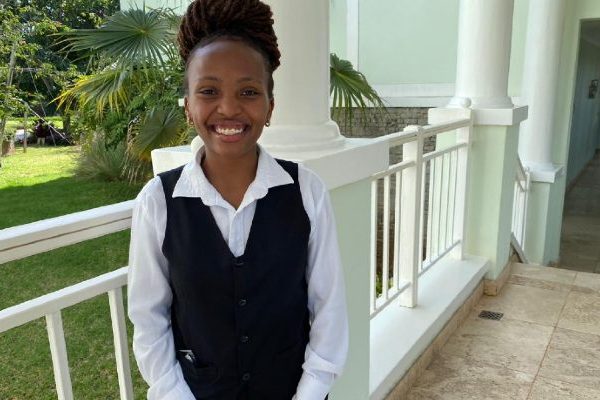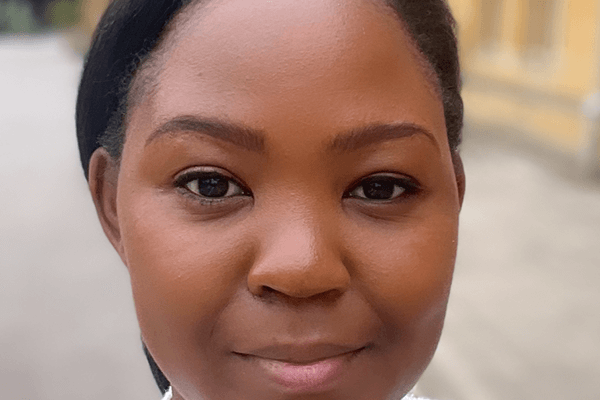Dr. David Chiawo is a conservation ecologist with research interests in biodiversity conservation, community based conservation and sustainable tourism. With Arabuko Sokoke forest which is the largest remaining coastal forest and a hotspot for birds in East Africa running out, David grew interest in working at finding a solution that will conserve the forest and birds, and also give a source of livelihood to the local community in this area – The Arabuko Sokoke Forest is located at Gede area between Kilifi and Malindi in the Northern Coast of Kenya.
Dr. Chiawo’s research identified a number of reasons why the local community did not fully embrace conservation, while providing solutions that would increase their participation in conservation and livelihoods.
Dr. Chiawo is married and has one loving daughter – Mitchelle Atieno and is a Tourism lecturer in the Centre for Tourism and Hospitality.
Why forest and birds?
I have always loved conservation that contributes to livelihoods of local communities. Therefore, I was interested in getting people to participate in conservation, and get something they can rely on for the future through research. Birds of Arabuko Sokoke Forest created this platform; the significance of the forest in bird conservation in mainland Africa (second most important after Congo forest) and growing interest of tourists on birds of the forest, forming the attachment points for community conservation approaches.
Arabuko Sokoke Forest is an Important Bird Area for avian tourism in mainland Kenya and one of the twenty-five biodiversity hotspots in the world and a leading bird hotspot in East Africa. The people have a spillover from tourism benefits accrued from this forest, the birds being the pivot point. Therefore, it is important to maintain bird conservation while encouraging tourism in this area. The relationships between the forest, the birds and tourism provided the best opportunity to study the models for conservation and local community participation.
Were the birds in danger?
The birds are not being killed so to speak, but the forest is running out. There is a lot of interest in the forest resources by the surrounding community e.g. timber, fiber, vegetables, herbal medicine or other resources. But what I want realized is that local households can gain more from Eco-tourism, which will enable them to meet their needs far much more while supporting conservation of the forest. However, six bird species exclusively found this forest (endemic) are globally threated and could be lost completely due to forest destruction.
Why research with this particular community?
The interest came to me during my masters when we were training in this area. During field training I learnt about the conservation value of the forest, economic disparity of the surrounding community, and the possible global attention this could attract. I then developed my first research proposal for a grant which was approved after one year giving me a platform to develop a model for conservation in this area. I got a grant from the International Foundation for Science (IFS) based in Sweden. And thus my PhD journey began.
PhD Research
My thesis; the effects of land use on the avifauna and its conservation in a Kenyan coastal forest ecosystem, and the significance of the Arabuko Sokoke Forest to the local community
What were your Findings?
I got three different levels of findings;
- Arabuko Sokoke has a very unique bird community, compared to the plantations and farmlands around. That uniqueness tells a lot. The birds take refuge in the forest than in any other surrounding area. Under normal circumstances you will find birds distributed to plantations, and farmlands.
- The models suggest that land use type affects the distribution and composition of the bird community and those feeding guilds that offer important ecosystem services. Mixed forests with high vegetation heterogeneity and habitats with a high number of fruiting trees and large trees are shown to support a diverse bird guild.
- Another finding was based on community and conservation. Most people would not support conservation if it did not contribute to their livelihoods. Therefore people would support projects giving them livelihood security, water, food and basic requirements. They are yet to find these benefits from tourism activities in the forest.
Therefore I worked at setting up a platform that will provide effective conservation management, and a management model that will bring in community leadership for the whole plan. The conservation plans have been ongoing, but there are lapses; if you find a lot of complaints from the community it means the plans are not fulfilling the livelihood of the local people.
The key questions to address community participation were;
Which management plans are effective, what are the gaps in implementation of the plans, and how can we stretch our conservation initiatives beyond the forest?
I worked at informing these questions by providing;
- Basic conservation management planning through integrated approach
- Afforestation programs
- Community participation through community based tourism programs
What challenges did you face while researching?
- Staying in the field for about 24months to collect ecological data for a repeat of an annual cycle. With every stay I had two weeks in the field. That was taxing.
- Another challenge was with getting the equipments for collecting data, which were expensive and for some I had to buy with my own money.
- Sometimes I would face language barrier issues and suspicion from the local households. However, after many months in the field and working closely with my field assistant from the locality, I was no longer a stranger to the community and their language.
- Lots of travelling ; field travels and external during the study period
Where did you study your PhD?
I studied at Rhodes University in South Africa. I did my data work at Cardiff University-UK under support of European consortium Biodiversity Virtual e-Lab (BioVel) and at South African Biodiversity Institute (SANBI) supported by IFS South African Biodiversity Information Facility (SANBIF). I acknowledge the support of my academic supervisor, Professor AJFK Craig, International Foundation for Science for research grant, Rhodes University and Strathmore.
Your other education background?
I undertook an undergraduate degree course at Kenyatta University in Education Science (Zoology and Botany). I then studied my masters in Ecology focusing on wildlife conservation and the people; after my big exposure on conservation management from training at Makerere University Biological Field Station in Kibale Forest, Uganda, by Tropical Biology Association; and in Polokwane grasslands in South Africa by Earthwatch Institute.
Source of Motivation?
My motivation is to see lives of communities, lives of mothers and children transform through integrated conservation approaches, empowering lives through conservation and ecotourism enterprising. I am motivated to see local ownership in management of conservation areas for improved livelihoods, conservation leadership and sustainable management of natural resources.
As I knelt to receive this degree, I felt humbled and inspired to give back to my students through my teaching/learning and research scholarship that they may have the chance to grow better as I had the privilege to, and to give back to society through application of conservation science that will contribute positively to humanity and biodiversity. I love environmental sustainability and social equity.
Congratulations Dr. Chiawo on this achievement.




